Runners rely on their legs, core, and overall strength to perform at their best. While running builds cardiovascular endurance, adding strength training to your routine can improve your performance, reduce injury risk, and increase overall power. A home gym workout tailored for runners can provide the variety and intensity you need to enhance your running skills.
In this content, we’ll discuss the best home gym exercises for runners, focusing on strength, mobility, and flexibility. These exercises will improve your speed, stamina, and prevent common running injuries. Whether you’re a beginner or experienced runner, these workouts are simple yet effective and can be done in the comfort of your home.
Strength Training for Runners
Strength training helps runners develop the muscles they rely on during running, such as the glutes, quads, hamstrings, and calves. Stronger muscles also improve your posture, endurance, and speed.
Squats

Squats are essential for building strength in your lower body, especially the quads and glutes. To do a basic squat:
- Stand with your feet shoulder-width apart.
- Lower your body by bending your knees, keeping your chest up and back straight.
- Go down until your thighs are parallel to the floor, then return to standing.
- Aim for 3 sets of 12–15 reps.
Lunges
Lunges target your quads, glutes, and hamstrings. They improve balance and coordination, which are vital for running form.
- Stand upright, step forward with one leg, and lower your body until both knees form 90-degree angles.
- Push through your front heel to return to standing.
- Alternate legs for 3 sets of 12–15 reps on each side.
Glute Bridges
The glutes play a key role in running. Glute bridges strengthen your glutes and lower back.
- Lie on your back with your knees bent and feet flat on the floor.
- Push your hips up towards the ceiling, squeezing your glutes at the top.
- Lower your hips back down and repeat.
- Perform 3 sets of 12–15 reps.
Step-Ups
Step-ups mimic the motion of running, making them perfect for runners.
- Find a sturdy step or bench.
- Step up with one leg, pressing through the heel to lift your body.
- Step down with the same leg and repeat on the other side.
- Do 3 sets of 12–15 reps per leg.
Main Workouts for Runners
A strong core improves your running posture and helps you maintain form during long runs. It also reduces the risk of injury by stabilizing your spine and pelvis.
Planks
Planks engage your entire core and improve stability.
- Lie face down, propping yourself up on your forearms and toes.
- Keep your body straight, tighten your abs, and hold the position.
- Start with 30 seconds and work your way up to 1–2 minutes.
Russian Twists
Russian twists target your obliques, which are important for maintaining balance during running.
- Sit on the floor with your knees bent and feet lifted slightly off the ground.
- Hold your hands together in front of you and rotate your torso to one side, then the other.
- Do 3 sets of 20 twists (10 per side).
Leg Raises
Leg raises strengthen your lower abs, which are crucial for maintaining posture while running.
- Lie flat on your back with your hands at your sides.
- Lift your legs up towards the ceiling, keeping them straight.
- Slowly lower your legs back down without touching the ground.
- Perform 3 sets of 12–15 reps.
Mountain Climbers
Mountain climbers are a great full-body workout that targets your core, arms, and legs. They also improve cardiovascular endurance.
- Start in a plank position.
- Bring one knee toward your chest, then quickly switch legs as if running in place.
- Aim for 3 sets of 30 seconds.
Mobility and Flexibility for Runners
Runners need mobility to improve stride length and flexibility to reduce muscle tightness. Regular stretching and mobility work can prevent injuries and improve running efficiency.
Hip Flexor Stretch
Tight hip flexors can lead to poor posture and discomfort while running.
- Step one leg forward and bend the knee, keeping the back leg straight and the heel off the ground.
- Push your hips forward to stretch the hip flexors.
- Hold for 30 seconds and repeat on the other leg.
Hamstring Stretch
Tight hamstrings can limit your running speed and stride.
- Sit on the floor with one leg extended straight.
- Reach forward toward your toes while keeping your back straight.
- Hold for 30 seconds on each side.
Quad Stretch
Stretching the quads helps maintain flexibility in your legs.
- Stand tall, grab your ankle with your hand, and pull it towards your glutes.
- Hold the stretch for 30 seconds per leg.
Calf Stretch
Calf flexibility is crucial for running efficiency.
- Stand facing a wall with one leg in front of the other.
- Keep your back leg straight and your heel on the floor as you push your hips forward to stretch the calf.
- Hold for 30 seconds and switch sides.
Foam Rolling
Foam rolling helps release muscle tension and improve blood flow. It’s especially effective for the quads, hamstrings, and calves.
- Roll over the foam roller slowly, focusing on tight spots.
- Spend 1–2 minutes on each muscle group.
Plyometric Exercises for Runners
Plyometric exercises help runners develop explosive strength, which improves speed and endurance. These exercises increase power by involving rapid muscle contraction.
Jump Squats
Jump squats strengthen your legs and improve running explosiveness.
- Stand with your feet shoulder-width apart.
- Lower into a squat and explode upward, jumping as high as you can.
- Land softly and go straight into the next squat.
- Do 3 sets of 10–12 reps.
Box Jumps
Box jumps enhance leg strength and power.
- Stand in front of a sturdy box or platform.
- Lower into a squat, then jump onto the box, landing with both feet.
- Step down and repeat for 3 sets of 10–12 reps.
Lateral Bounds
Lateral bounds improve side-to-side movement, which helps stabilize your running form.
- Stand with feet together and leap to the side, landing softly on one foot.
- Push off with the opposite foot and jump to the other side.
- Perform 3 sets of 15–20 bounds per side.
Cardio for Runners
While running is your main form of cardio, adding other cardio exercises to your home gym routine can improve cardiovascular health and prevent plateaus.
Jump Rope
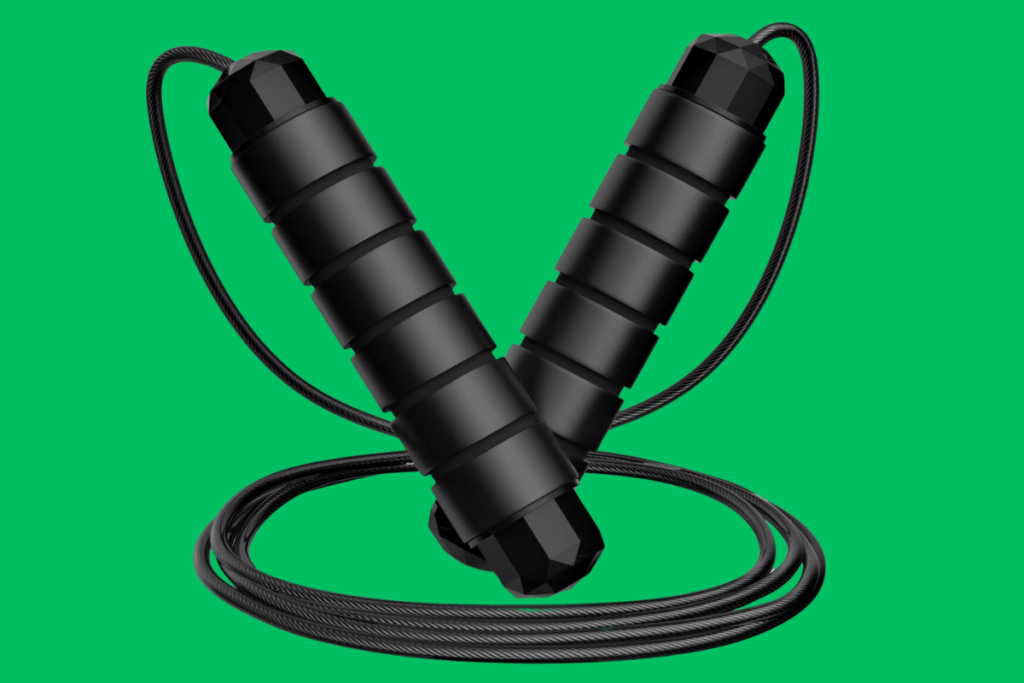
Jump rope is a great cardio workout for runners. It builds endurance and strengthens your calves.
- Jump for 1–2 minutes, rest, and repeat for 3–5 sets.
- Try different jump rope variations, such as double unders, to keep things interesting.
Burpees
Burpees are a full-body workout that improves cardiovascular fitness and strengthens muscles.
- Start in a standing position, drop into a squat, jump your feet back into a plank, do a push-up, then jump your feet back in and jump up.
- Perform 3 sets of 10–12 reps.
High Knees
High knees improve cardiovascular endurance and engage the core and legs.
- Stand in place and quickly drive your knees up toward your chest.
- Keep a fast pace for 30 seconds and repeat for 3–5 sets.
Cool Down and Recovery
Cooling down after a workout is essential for preventing injury and aiding recovery. Stretching, foam rolling, and light cardio help your muscles recover and reduce soreness.
Light Jogging or Walking
After a workout, perform light jogging or walking for 5–10 minutes. This helps reduce the buildup of lactic acid in your muscles.
Deep Stretching
Take time to stretch your entire body, focusing on your hamstrings, quads, calves, and hips. Hold each stretch for 30 seconds.
Foam Rolling
Foam rolling helps release tight muscles and promote blood flow. Spend 5–10 minutes foam rolling your legs and back.
Stay Hydrated and Nourished
Drink plenty of water and eat a balanced meal after your workout to aid recovery and muscle repair. Focus on protein and carbohydrates to refuel your body.
Conclusion
A home gym workout for runners is an excellent way to complement your running routine and enhance your performance. Strength training, mobility work, and plyometrics can all improve your running efficiency, speed, and endurance. Adding core exercises and cardio routines will help you develop a well-rounded fitness level that translates directly to better running.
By consistently incorporating these exercises into your home gym workouts, you’ll build a stronger body that supports your running goals. Remember to focus on consistency, listen to your body, and allow for adequate recovery to avoid injury and burnout. With time and dedication, these workouts will help you become a faster, more efficient runner.
Want more home workout tips, gear recommendations, and weekly fitness insights?
Subscribe to our free newsletter and get expert advice delivered straight to your inbox — powered by The GymsFixer Team.

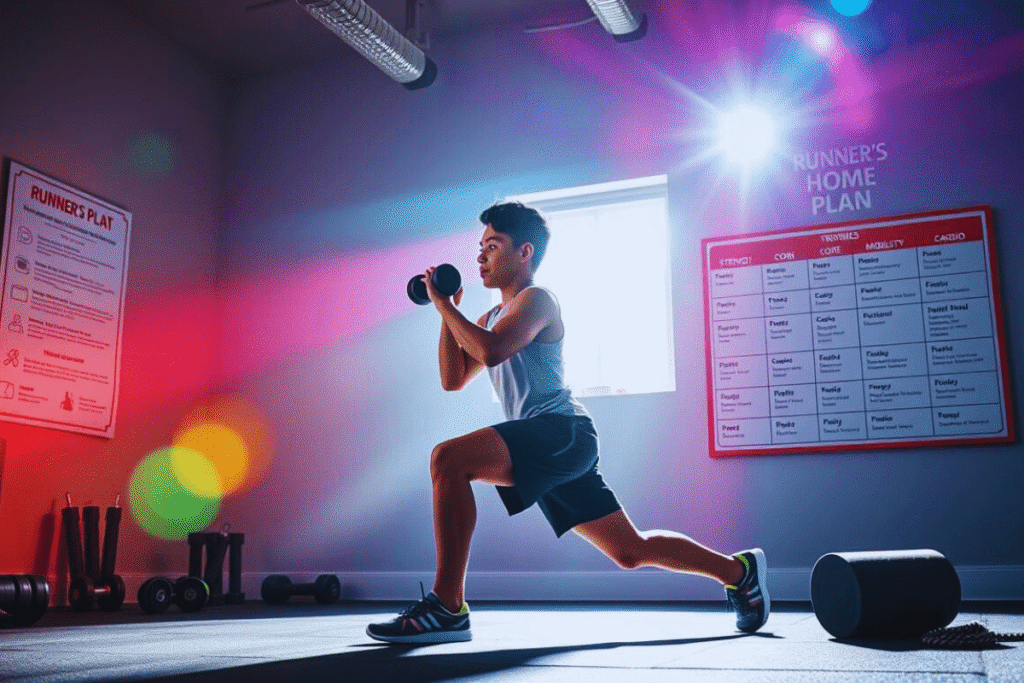
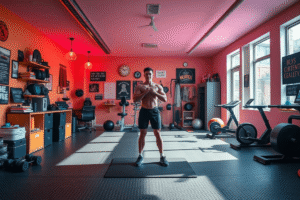


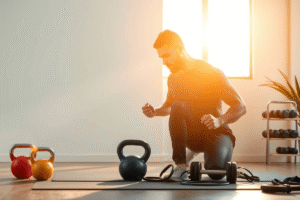
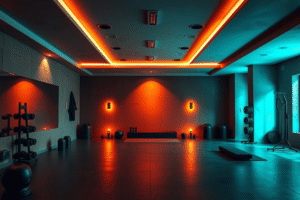
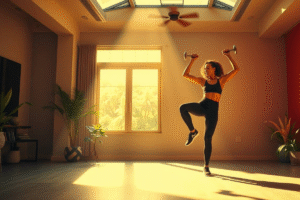
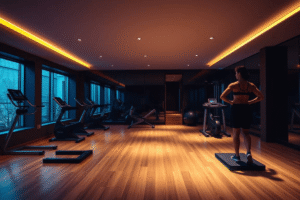
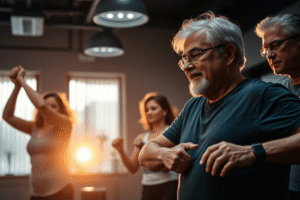
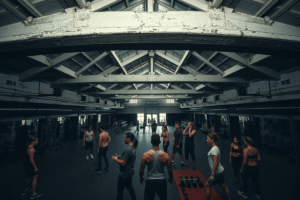
2 Comments
Runners need mobility to improve stride length and flexibility to reduce muscle tightness. Regular stretching and mobility work can prevent injuries and improve running efficiency.
Sie können die besten Spiele spielen und die Live-Casino-Funktionen von überall aus nutzen. Es verfügt über mehr als 2000 Spiele von renommierten Anbietern und unterstützt sowohl den Einzelspieler- als auch den Live-Dealer-Modus.
Sie können dann alle Spielautomaten, Tische und Live-Dealer-Spiele spielen, wann immer Sie möchten, egal ob
Sie unterwegs sind, im Stau stehen oder einfach nur zu Hause chillen.
Holen Sie das Beste aus Ihrem Geld heraus, indem Sie Codes zur richtigen Zeit verwenden und
alle Boni nutzen, die unser Casino bietet.
Von Roulette bis hin zu Blackjack und Baccarat bietet dieses Casino eine breite Auswahl, um alle Arten von Glücksspielbegeisterten zufrieden zu stellen. Ja, das WinSpirit Casino bietet definitiv Live-Dealer-Spiele
an. Das WinSpirit Casino bietet eine breite Palette von Zahlungsmethoden an, um den unterschiedlichen Bedürfnissen der Spieler gerecht zu
werden. Melden Sie sich an, schnappen Sie sich Ihren Willkommensbonus
und entdecken Sie selbst die vielen anderen großartigen Aktionen. Ihr
Willkommensbonus ist ehrlich gesagt ziemlich beeindruckend
– es erinnert mich an das Gefühl, wenn man nach einem langen Tag nach Hause kommt und
eine heiße Tasse Tee auf einen wartet. 😃 Basierend auf meinen Erfahrungen kann ich sagen, dass die Vorteile,
die Sie erhalten, weit über das hinausgehen, was normale Spieler
bekommen.
Für alle Geräte verpflichten wir uns, verantwortungsvolle, sichere und unterhaltsame
Casino-Unterhaltung zu bieten. Wenn Sie regelmäßig teilnehmen, können Sie Sonderangebote erhalten. Beispielsweise erfordern viele Boni eine Mindesteinzahlung
von €20, können nur für bestimmte Spiele verwendet werden und haben Wettanforderungen, die sich von Angebot zu Angebot ändern.
References:
https://online-spielhallen.de/1go-casino-mobile-app-dein-umfassender-spielpartner/